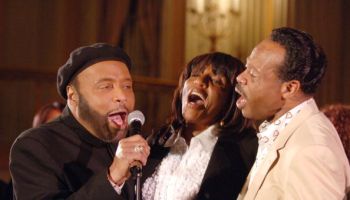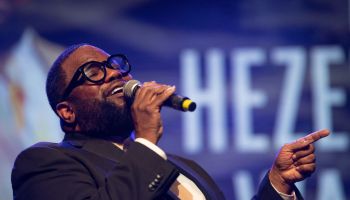Via: NewsOne.com
//
WASHINGTON — President Barack Obama personally welcomed the Dalai Lama to the White House Thursday and lauded his goals for the Tibetan people, but he kept their get-together off-camera and low-key in an attempt to avoid inflaming tensions with China.
At the risk of angering Beijing, Obama did tell the exiled spiritual leader he backs the preservation of Tibet’s culture and supports human rights for its people. He also gave encouragement to the Dalai Lama’s request for talks with the Chinese government
Meetings between the Dalai Lama and U.S. presidents became standard fare under former President George H.W. Bush nearly 20 years ago. But the choreography is always delicate and closely watched because of China’s sensitivity to the issue.
Text continues after gallery …
Revered in much of the world, the Dalai Lama is seen by Beijing as a separatist who seeks to overthrow Chinese rule of Tibet. Though he says that is untrue, China regards any official foreign leader’s contact with the Buddhist monk as an infringement on its sovereignty over the mountainous region and as a particularly unwelcome snub. China had urged Obama not to meet with the Dalai Lama, warning that the visit could further hurt ties.
China is a rising global rival for the U.S. and a hoped-for partner. So concern about reprisals, in the form of reduced cooperation with Washington or other punitive steps, has led American presidents, including Obama, to tread carefully.
RELATED: Obama’s Controversial Meeting With Dalai Lama Likely Won’t Be Public
There was no welcome fanfare on Thursday, nor a public appearance with the president. The White House released only a single official picture, rather than allow independent photographers and reporters to see the two men together. This from a president who promised — and in some other ways has delivered — unprecedented transparency in his White House.
The Dalai Lama did meet with reporters outside the White House, playfully tossing a bit of snow at them and declaring himself “very happy” with the visit.
George H.W. Bush allowed no photos of his 1991 talks with the Dalai Lama. Bill Clinton avoided formal sessions altogther, favoring drop-bys into the Dalai Lama’s other meetings. George W. Bush kept his meetings under wraps, too — though in 2007, he broke with tradition and appeared in public with the Dalai Lama to present him with the Congressional Gold Medal, at the Capitol.
Everything about Obama’s meeting with the Dalai Lama was muted.
“The optics of this thing are incredibly important to the Chinese,” said Michael Green, George W. Bush’s senior Asia adviser.
So Obama sat down with his fellow Nobel laureate in the Map Room instead of the Oval Office — a decidedly lower status in the White House venue pecking order. Even the White House description of the talks was done on paper. The timing was a concession, too, as Obama declined to see the Dalai Lama during his Washington stay in October because it would have come before the president’s November China visit.
RELATED: South Africa Bars Dalai Lama From Peace Conference
“The president stated his strong support for the preservation of Tibet’s unique religious, cultural and linguistic identity and the protection of human rights for Tibetans in the People’s Republic of China,” White House press secretary Robert Gibbs said after the private meeting that lasted for more than an hour.
Obama’s handling of the Dalai Lama visit also has concerned some who watched Obama seek the moral high ground on human rights during his campaign and early presidency.
Even more, to a public worried about the loss of U.S. jobs and global influence to China, the deference could come across as bending to Beijing’s priorities. Similar questions arose during Obama’s Asia trip, when some analysts concluded that the president gave much to China and got little back.
Obama, however, prides himself on pragmatism.
He believes China’s help is the linchpin for several difficult and consequential global problems, from nuclear standoffs in Iran and North Korea to international agreement on fighting climate change.
Further, while U.S.-Chinese relations have been strained for years over currency and military disputes and other issues, Beijing’s rapid growth of late has the two powerhouses moving closer to equals. With the Chinese government America’s biggest creditor, holding $800 billion of federal debt, Beijing has extraordinary leverage in the relationship. Most recently, the Obama administration’s approval of a multibillion-dollar arms sale to Taiwan, the self-governing democratic island that Beijing claims as its own, has raised tensions.
For the Dalai Lama, who fled his homeland to India in 1959 during a failed uprising eight years after Chinese troops took over Tibet, the visit — whether private or not — was a boon.
His envoy, Lodi Gyari, said Tibetans feeling marginalized by China would get encouragement from the session. Green said just the “fact that they spend time together in an intimate setting means everything for the Tibetan cause.”
Speaking to reporters on the White House driveway, the Dalai Lama spoke to the president about the promotion of human values, religious harmony, a greater leadership role for women around the world and the concerns of the Tibetan people, and that Obama was “very much supportive.”












